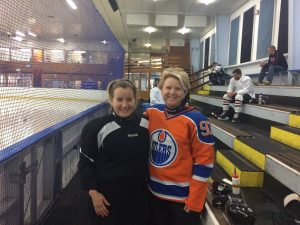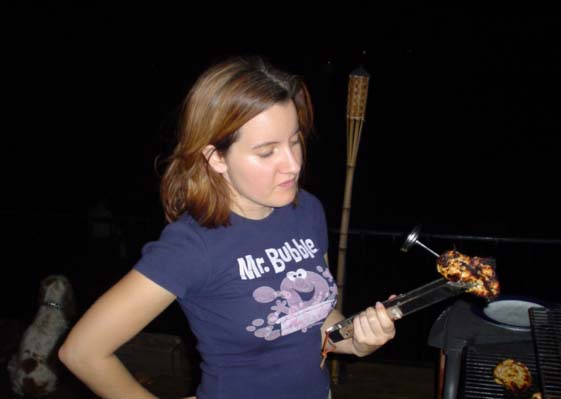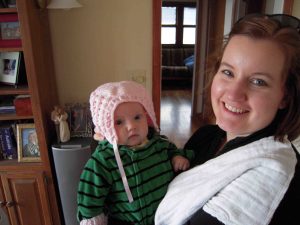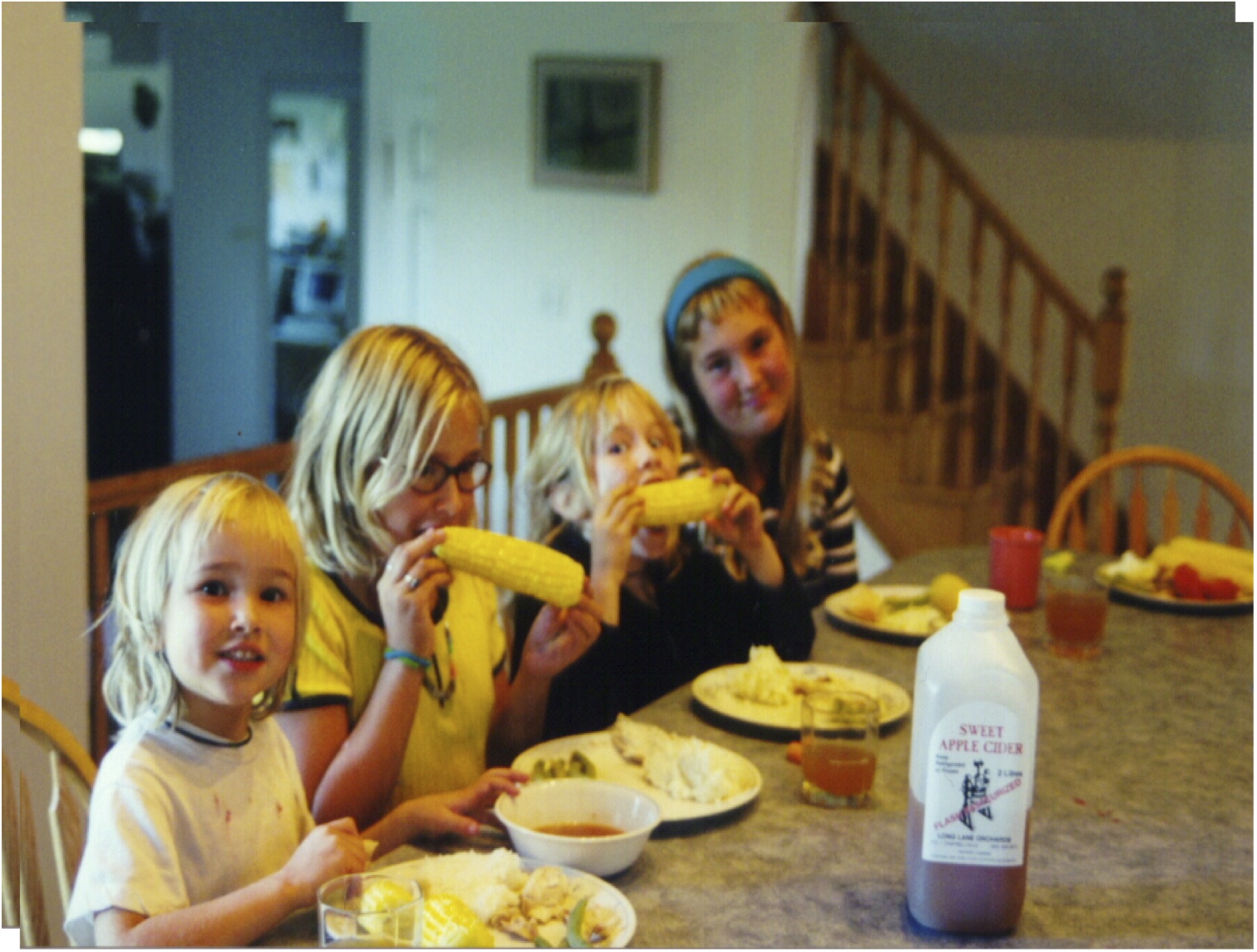A happy birthday to my soulmate and partner, Amy, who’s had to watch me decline while the uni is still closed and other stresses. Lova ya.
Tag Archives: Amy
My girl
I know I’ve been writing a lot about Amy, and I will admit to mixed feelings, but I want to make it work.
 Cause if I don’t have a stable home life, I don’t write.
Cause if I don’t have a stable home life, I don’t write.
I know there’s weird shit going on in my brain, and she doesn’t deserve this, but it’s happening.
So I can go to some sort of old folks home and pass away my days, or try to make things work around here, which seems a challenge.
55 years ago today, The Temptations’ “My Girl”, written by Smokey Robinson and Ronald White, from Motown Records, reaches number 1 on the Hot 100.
Amy, you’re my rock
barfblog.com: This note’s for you
I’m fortunate to have a partner for 11 years now who has repeatedly told me she loves me – just the way I am.
And she’s smart, and main breadwinner in our Brisbane household.
She also swears a lot more than she used too: blames it on being married to a Canadian hockey player, and taken up hockey herself.
 Check your e-mail settings, I often go to your trash because I swears a lot.
Check your e-mail settings, I often go to your trash because I swears a lot.
Thirty years ago I had this feeling.
My hands felt just like two balloons.
By the summer of 1987, I was bored out of my mind studying Verticillium wilt in resistant and susceptible tomato lines – so much so that I would listen, not even watch, but listen, to Toronto Blue Jays games on the radio at night while I infected tomato plants in the lab and then extracted DNA.
It was a non-pharmaceutical sedative.
I decided to immerse myself in finding a bigger audience — newspapers, at the time.
When I was a gradual student back about 1986, I had started writing about science for the University of Guelph student newspaper.
Canadian daughter one was born and the next month I went to a scientific meeting to present some results about my Verticillium findings.
I spent most of my time in an outdoor patio at Carleton University, reading all I could about media and newspapers, and came up with a plan to start an alternative newspaper when I returned to Guelph.
Then I got hired as a section editor at the existing paper.
Then I became editor-in-chief.
And then I quit, and put my alternative paper plan into action.
Thirty years later, I’m going to revisit history and do sorta the same thing.
Not for ego, not for repetition, but for the same reason people wanted me to lead that other paper 30 years ago: a whole bunch of people asked me to do it.
For 25 years I have published barfblog.com and FSnet.
I openly shared this with everyone because that’s what I thought profs at public universities did.
But they had no trouble getting rid of full-professor me.
Lesson learned.
Amy and I had a visit a few months ago from a former student of mine from Ireland, who now lives in Sydney.
She told me later that I wasn’t in the right space to hear what she had to say those few months ago.
She was right.
But she recently told me, what you do is unique, people use your stuff all over the world, can you really just turn your back on all that?
Probably not.
People love food safety as long as it is free.
Universities have been good to me.
But what worked in the time of Socrates, Plato and Aristotle (the first empiricist) may not work today.
Just like we don’t want medical treatments from 2,000 years ago, providing information and the notion of the commons should also fit today.
If you see any adverts on barfblog.com, please let us know. We don’t accept advertising. We’re idealistic that way (until we go broke).
Someone will eventually pay, but until then, I’m happy to embrace the Grateful Dead model of entrepreneurship: Build it and they will come.
Oh, and I am fully aware of the hypocrisy of Neil Young singing this note’s for you, after making millions.
I try to be more grounded.
Amy Hubbell and Einstein
‘My girl just don’t walk, she unfurls’
Natural does not mean safe: Kansas locals still pushing unpasteurized cider
Oh, unpasteurized apple cider, when will you stop providing food safety moments?
It was 13 years ago last night that U.S. health investigators figured out that unpasteurized juice with apple cider as a base was making people sick with E. coli O157:H7 in the Pacific Northwest region.
.jpg) On Friday, Amy made a stop at a local plant and produce shop to pick up a pumpkin.
On Friday, Amy made a stop at a local plant and produce shop to pick up a pumpkin.
Amy writes:
The woman behind the counter quipped, “It looks like you already have a little pumpkin” motioning towards Sorenne who was hanging off my hip.
As I was paying the woman asked me, “Did you get a chance to have a swig of our apple cider?”
There was a tray with about 10 dixie cups full of cider on the counter. I had looked at them with interest while waiting to pay. I used to love apple cider but Doug has taught me to be skeptical. I asked without thinking, “Is the juice pasteurized?”
The woman looked at me as if to say, of course not, but she said, “No, but there is a preservative in it,” sort of apologetically for the preservative not being natural.
“No thanks then, and especially not for my daughter.” “Oh no!” she replied. “I didn’t mean for her but for you.” I left it at that. I was in a hurry, the woman was helping me to the car with the pumpkin, and maybe she just didn’t know better.
In my mind I was screaming, “Lady, I don’t want to die from your juice either.” I called Doug to thank him for teaching me about food safety. Four years ago I would have unthinkingly and gladly drank the cider. And if I had a child, I would have also offered it to her, not knowing about E. coli or even questioning whether someone in a store would serve me unsafe food.
In October, 1996, 16-month-old Anna Gimmestad of Denver drank Smoothie juice manufactured by Odwalla Inc. of Half Moon Bay, Calif. She died several weeks later; 64 others became ill in several western U.S. states and British Columbia after drinking the same juices, which contained unpasteurized apple cider –and E. coli O157:H7. Investigators believe that some of the apples used to make the cider may have been insufficiently washed after falling to the ground and coming into contact with deer feces.
In the fall of 1998, I accompanied one of my four daughters on a kindergarten trip to the farm. After petting the animals and touring the crops –I questioned the fresh manure on the strawberries –we were assured that all the food produced was natural. We then returned for unpasteurized apple cider. The host served the cider in a coffee urn, heated, so my concern about it being unpasteurized was abated. I asked: "Did you serve the cider heated because you heard about other outbreaks and were concerned about liability?" She responded, "No. The stuff starts to smell when it’s a few weeks old and heating removes the smell."
Here’s the abstract from a paper Amber Luedtke and I published back in 2002:
A review of North American apple cider outbreaks caused by E. coli O157:H7 demonstrated that in the U.S., government officials, cider producers, interest groups and the public were actively involved in reforming and reducing the risk associated with unpasteurized apple cider. In Canada, media coverage was limited and government agencies inadequately managed and communicated relevant updates or new documents to the industry and the public.
Therefore, a survey was conducted with fifteen apple cider producers in Ontario, Canada, to gain a better understanding of production practices and information sources. Small, seasonal operations in Ontario produce approximately 20,000 litres of cider per year. Improper processing procedures were employed by some operators, including the use of unwashed apples and not using sanitizers or labeling products accurately.
Most did not pasteurize or have additional safety measures. Larger cider producers ran year-long, with some producing in excess of 500,000 litres of cider. Most sold to large retail stores and have implemented safety measures such as HACCP plans, cider testing and pasteurization. All producers surveyed received government information on an irregular basis, and the motivation to ensure safe, high-quality apple cider was influenced by financial stability along with consumer and market demand, rather than by government enforcement.
bites barfblog and food safety: information procedures
People often ask me, “Doug, how do you choose the information that goes in bites.ksu.edu? Do you have a basis for any of your food safety rants on barfblog? Why are you such a jerk?
People often ask Ben, “Why do you write so much about vomit?”
 People often ask Amy, “Why are you with Doug?”
People often ask Amy, “Why are you with Doug?”
When we ran the food safety information centre back in Canada, we had detailed procedures for how to answer questions, what information was provided and why. We don’t answer questions so much anymore, but we do provide a lot of information so I figured we better clearly understand what we do and why. This is more for us and all the students that come through my lab than it is for you. Really, it’s me, not you.
bites.ksu.edu is a unique comprehensive resource for all those with a personal or professional interest in food safety. Dr. Powell of Kansas State University, and associates, search out credible, current, evidence-based information on food safety and make it accessible to domestic and international audiences through multiple media. Sources of food safety information include government regulatory agencies, international organizations such as the World Health Organization (WHO) and the Food and Agriculture Organization of the United Nations (FAO), peer-reviewed scientific publications, academia, recognized experts in the field and other sources as appropriate.
Throughout all bites activities, the emphasis is on engaging people in dialogue about food-related risks, controls and benefits, from farm-to-fork. bites strives to provide reliable, relevant information in culturally and linguistically appropriate formats to assist people in identifying, understanding and mitigating the causes of foodborne illness.
bites LISTSERV
The bites.ksu.edu listserv is a free web-based mailing list where information about current and emerging food safety issues is provided, gathered from journalistic and scientific sources around the world and condensed into short items or stories that make up the daily postings. The listserv has been issued continuously since 1995 and is distributed daily via e-mail to thousands of individuals worldwide from academia, industry, government, the farm community, journalists and the public at large.
 The listserv is designed to:
The listserv is designed to:
• convey timely and current information for direction of research, diagnostic or investigative activities;
• identify food risk trends and issues for risk management and communication activities; and
• promote awareness of public concerns in scientific and regulatory circles.
The bites listserv functions as a food safety news aggregator, summarizing available information that can be can be useful for risk managers in proactively anticipating trends and reactively address issues. The bites editor, Dr. Powell, does not say whether a story is right or wrong or somewhere in between, but rather that a specific story is available today for public discussion.
barfblog.com is where Drs. Powell, Chapman, Hubbell and assorted food safety friends offer evidence-based opinions on current food safety issues. Opinions must be evidence-based – with references – reliable, rapid and relevant. The barfblog authors edit each other – viciously.
 TWITTER
TWITTER
Breaking food safety news items that eventually appear in bites or barfblog are often posted on Twitter for faster public notification.
INFOSHEETS
Food safety infosheets are designed to influence food handler practices by utilizing four attributes culled from education, behavioral science and communication literature:
• surprising and compelling messages;
• putting actions and their consequence in context;
• generating discussion within the target audiences’ environments; and
• using verbal narrative, or storytelling, as a message delivery device.
Food safety infosheets are based on stories about outbreaks of foodborne illness sourced from the bites listserv. Four criteria are used to select the story: discussion of a foodborne illness outbreak; discussion of background knowledge of a pathogen (including symptoms, etiology and transmission); food handler control practices; and emerging food safety issues. Food safety infosheets also contain evidence-based prescriptive information to prevent or mitigate foodborne illness related to food handling. And now, available in French, Spanish and Portuguese.
bites bistro videos
A nod to the youtube generation, but we don’t really know what we’re doing.
Watching the trainwreck that is diarrhea
There’s a certain appeal to trainspotting – or watching an impending trainwreck. It’s appalling and compelling at the same time. Ben and I went to a Sloan concert in Guelph several years ago and we wanted to leave they were so bad – and Sloan is usually great – but had to stay and watch where they would descend to next.
 It was worth the wait.
It was worth the wait.
Amy the French professor has a similar obsession. There’s some woman who writes a blog about her meaningless life in France and Amy is hooked. Amy finds this woman’s blog posts meaningless, facile and unbelievably stupid. And she reads it every day.
Recently, French blogger’s daughter had, as Ben likes to say, the squirts: diarrhea at daycare. Mom says, “Our daycare is pretty cool about letting her (diarrhea daughter) come.”
Diarrhea in a daycare is not a good thing, but hey, poop happens. Not so sure about the quality control when the kid’s runny poop ends up on the bandage of her finger that mom had accidentally attempted to sever using a bedroom door. Read the blog and it may make sense; or want to kill yourself.
Surprisingly, the newspaper in Pembroke, Ontario, near the Barry’s Bay cottage owned by the parents of my high school girlfriend, has some tips for kids with the squirts.
Prevent the spread of viruses. Clean your hands and your child’s hands often, especially after using the toilet or changing a diaper. Use soap and warm water, or hand sanitizer. If hands are dirty, hand sanitizers won’t work, you’ll need to wash with soap and water first.
Amy and I have been changing a lot of diapers. We wash our hands. And despite some fantastically explosive messes, haven’t gotten baby shit on the kid’s fingers.
Meet iFSN: Amy Hubbell
Salut! I’m Amy, a French professor gone food safety geek. I love to learn about food safety practices in different cultures, and watch how they play out on reality TV. No wonder why Doug’s converting our kitchen into the Safe Food Café. Although I’m more known for my blog posts on lait cru (raw milk) camembert and doggy dining, I write on exile and nostalgia in French autobiography for a living.
 Ne mangez pas de caca, et donnez ce que vous pouvez pour soutenir l’iFSN.
Ne mangez pas de caca, et donnez ce que vous pouvez pour soutenir l’iFSN.
(translation: don’t eat poop, and give what you can to support iFSN)




 From the cider files
From the cider files